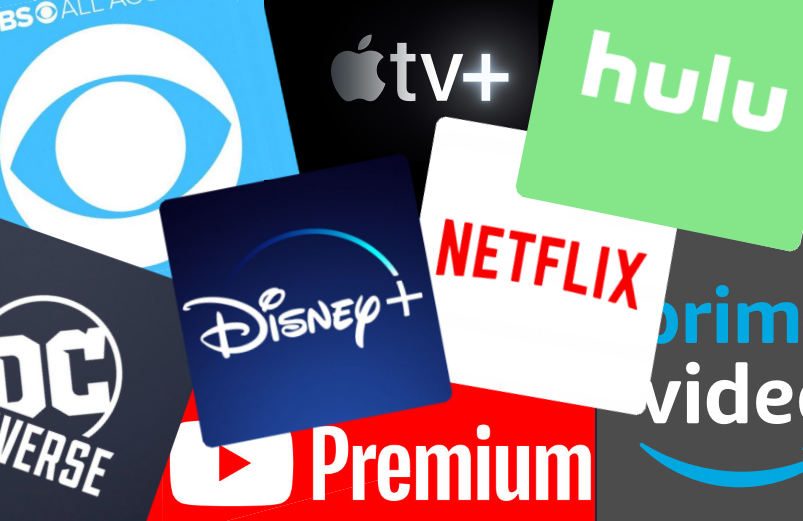Streaming Unleashed: Navigating the Future of Entertainment
Streaming Unleashed: Navigating the Future of Entertainment
Blog Article

The last decade has seen a seismic shift in how we consume entertainment, with online streaming emerging as the dominant force in this evolution. As traditional cable television begins to fade in popularity, streaming platforms have surged to the forefront, offering viewers greater flexibility and an ever-expanding library of content at their fingertips. This revolution has not only changed what we watch but also how we experience storytelling, creating a world where binge-watching has become the norm and personalized recommendations shape our viewing habits.
Today, millions of users turn to streaming services for everything from blockbuster movies to niche documentaries, transforming the landscape of the entertainment industry. With the rise of platforms like Netflix, Amazon Prime, and Disney+, viewers are not just passive consumers; they are active participants in a global entertainment ecosystem that continuously adapts to their preferences. This article delves into the world of online streaming, exploring its impact on creators, audiences, and the future of entertainment itself.
The Rise of Online Streaming
The evolution of technology has dramatically transformed the way we consume media, leading to the remarkable rise of online streaming. Gone are the days when viewers were bound by rigid television schedules or reliant on physical media. Instead, platforms like Netflix, Hulu, and Amazon Prime have given audiences unprecedented access to a vast array of content at their fingertips, allowing them to watch what they want, when they want. This shift has fundamentally changed the landscape of entertainment, creating a new era where user preference reigns supreme.
As internet speeds have improved and devices have become more sophisticated, online streaming has gained immense popularity. Mobile devices, smart TVs, and gaming consoles have all embraced streaming services, making it easier for users to integrate entertainment into their daily lives. Social media has also played a crucial role, enabling users to share their favorite shows and discover new content through recommendations from friends and influencers. This interconnectedness has fueled a cultural shift towards binge-watching and on-demand viewing, solidifying streaming's position as a dominant force in the entertainment industry.
The impact of online streaming extends beyond just consumer habits; it has also influenced how content is created and distributed. Traditional media companies are adapting to the changing landscape, with many launching their own streaming platforms to attract audiences. This competition has led to an influx of original content, providing viewers with diverse options and pushing creative boundaries. As online streaming continues to grow, it reshapes not only our viewing experiences but also the entire entertainment ecosystem, setting the stage for exciting developments in the future.
Impact on Traditional Media
The rise of online streaming has fundamentally altered the landscape of traditional media. As audiences increasingly turn to platforms like Netflix and Hulu for their entertainment needs, conventional television channels face declining viewership and advertising revenues. This shift has prompted traditional media companies to reevaluate their strategies, often scrambling to adapt their content delivery methods to attract a digital-savvy audience. The shift to streaming has not only impacted viewer habits but has also led to a fragmentation of audiences that traditional broadcasters once enjoyed.
Furthermore, the ascent of streaming services has fostered a new wave of content creation that traditional media struggles to compete with. Online platforms are known for their flexibility and willingness to take risks on diverse and innovative programming, allowing for the emergence of new voices in the entertainment industry. This increased competition has forced traditional networks to invest in original programming and explore alternatives such as live streaming and on-demand services. However, while some have successfully made this transition, others have faced challenges in keeping pace with the rapid changes in consumption patterns.
Lastly, the impact on traditional media extends to advertising dynamics. With viewers cutting the cord and gravitating toward ad-free subscription models or targeted ads on streaming platforms, advertisers are rethinking their approach. Many are investing more heavily in digital advertising, which often promises better targeting and engagement metrics compared to traditional media. This shift not only affects how advertising dollars are allocated but also how content is produced, as creators strive to meet the evolving preferences of their audiences in an increasingly digital world.
Future Trends in Streaming
Find Out More
As online streaming continues to evolve, we can expect a significant shift in content delivery methods and consumption patterns. One prominent trend is the integration of artificial intelligence and machine learning technologies. These advancements will enhance personalized recommendations, making it easier for viewers to discover content that matches their preferences. By analyzing viewing habits and trends, streaming platforms can curate tailored experiences, fostering deeper connections between audiences and the content they consume.
Another emerging trend is the rise of interactive and immersive content. With advancements in virtual reality and augmented reality, streaming services are exploring new ways to engage their audiences. This shift towards immersive storytelling allows viewers to be more than just passive consumers; they can actively participate in the narrative. By blending traditional streaming formats with innovative technology, platforms are set to revolutionize how stories are told and experienced.
Additionally, as global connectivity improves, we will see increased accessibility to streaming platforms in emerging markets. This expansion presents opportunities for diverse content creation that reflects local cultures and narratives. As more people gain access to streaming services, we can anticipate a richer variety of programming that caters to different tastes and backgrounds, ultimately shaping the future landscape of online entertainment.
Report this page